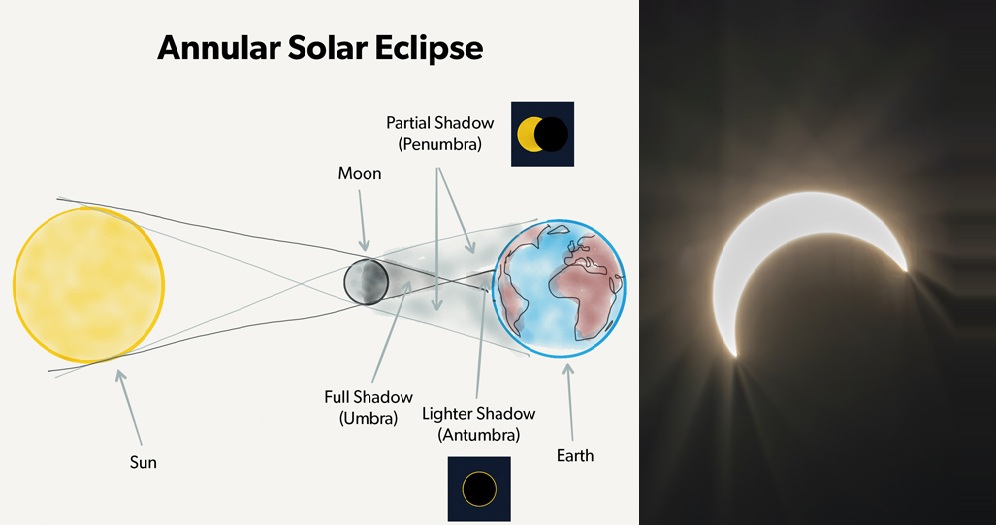
Solar eclipse marks the summer solstice

Skywatchers along a narrow band from West Africa to the Arabian Peninsula, India and southern China witnessed a dramatic "ring of fire" solar eclipse on Sunday.
Annular eclipses occur when the Moon, passing between Earth and the Sun, is not quite close enough to our planet to completely obscure sunlight, leaving a thin ring of the solar disc visible.
They happen every year or two, and can only be seen from a narrow pathway across the planet.
Remarkably, the eclipse arrived on the northern hemisphere's longest day of the year - the summer solstice - when Earth's North Pole is tilted most directly towards the Sun.
The annular eclipse is visible from only about 2 percent of Earth's surface, Florent Delefie, an astronomer at the Paris Observatory, told AFP news agency.
"It's a bit like switching from a 500-watt to a 30-watt light bulb," he added. "It's a cold light, and you don't see as well."
Editor & Publisher: S. M. Mesbah Uddin
Published by the Editor from House-45,
Road-3, Section-12, Pallabi, Mirpur
Dhaka-1216, Bangladesh
Call: +01713180024 & 0167 538 3357
News & Commercial Office :
Phone: 096 9612 7234 & 096 1175 5298
e-mail: financialpostbd@gmail.com
HAC & Marketing (Advertisement)
Call: 01616 521 297
e-mail: tdfpad@gmail.com